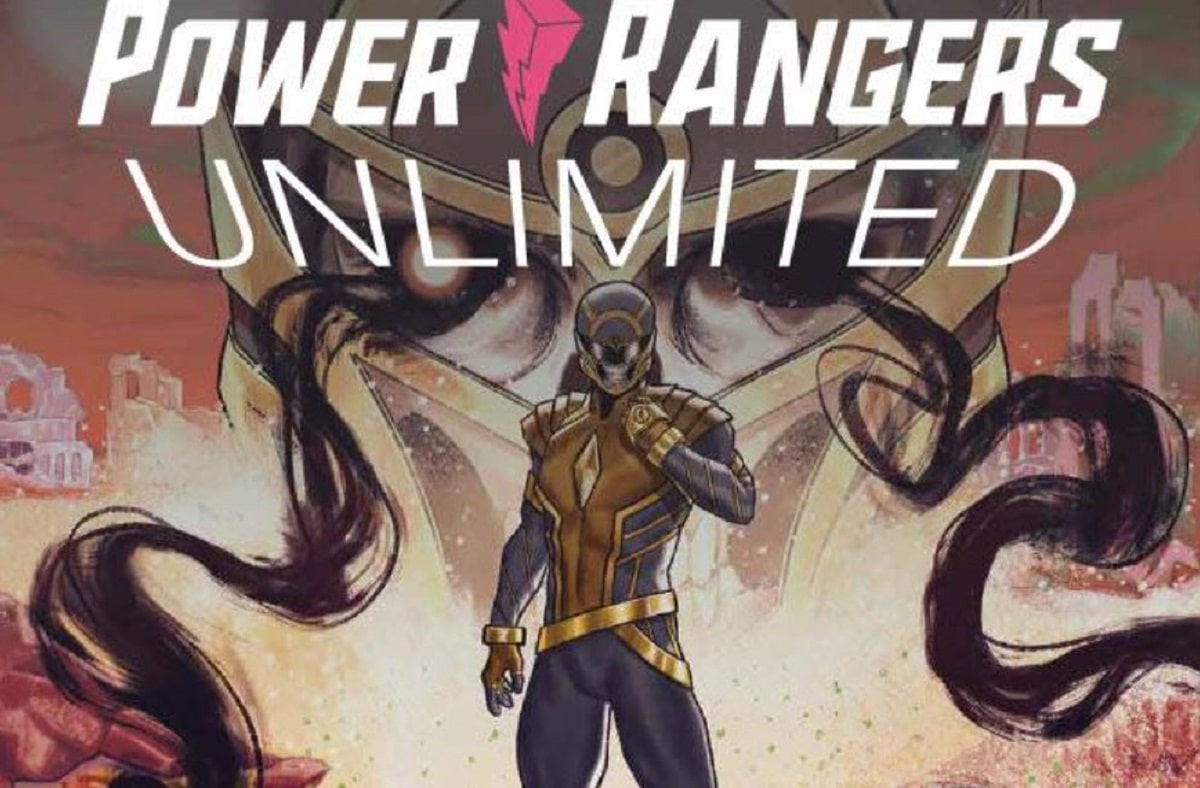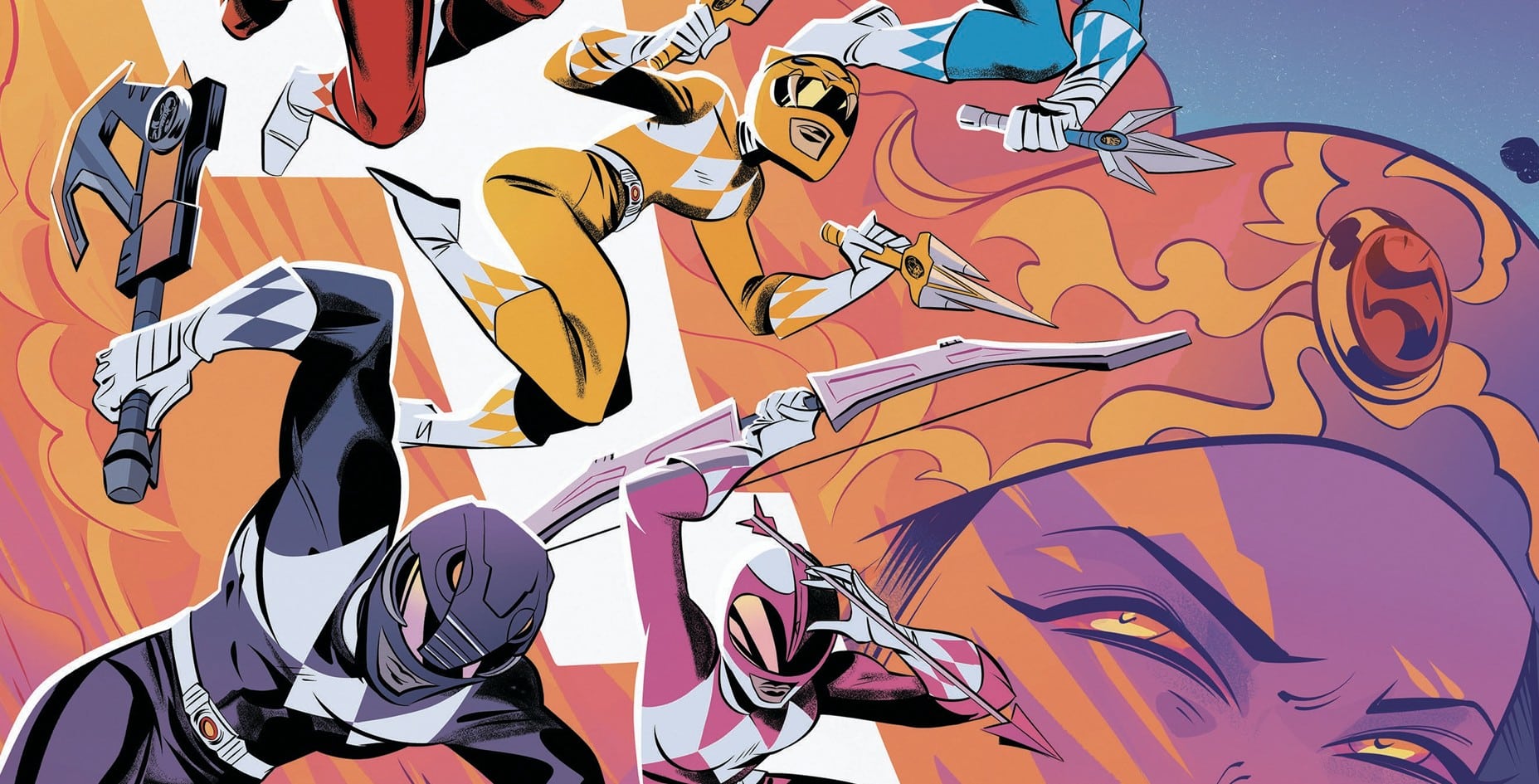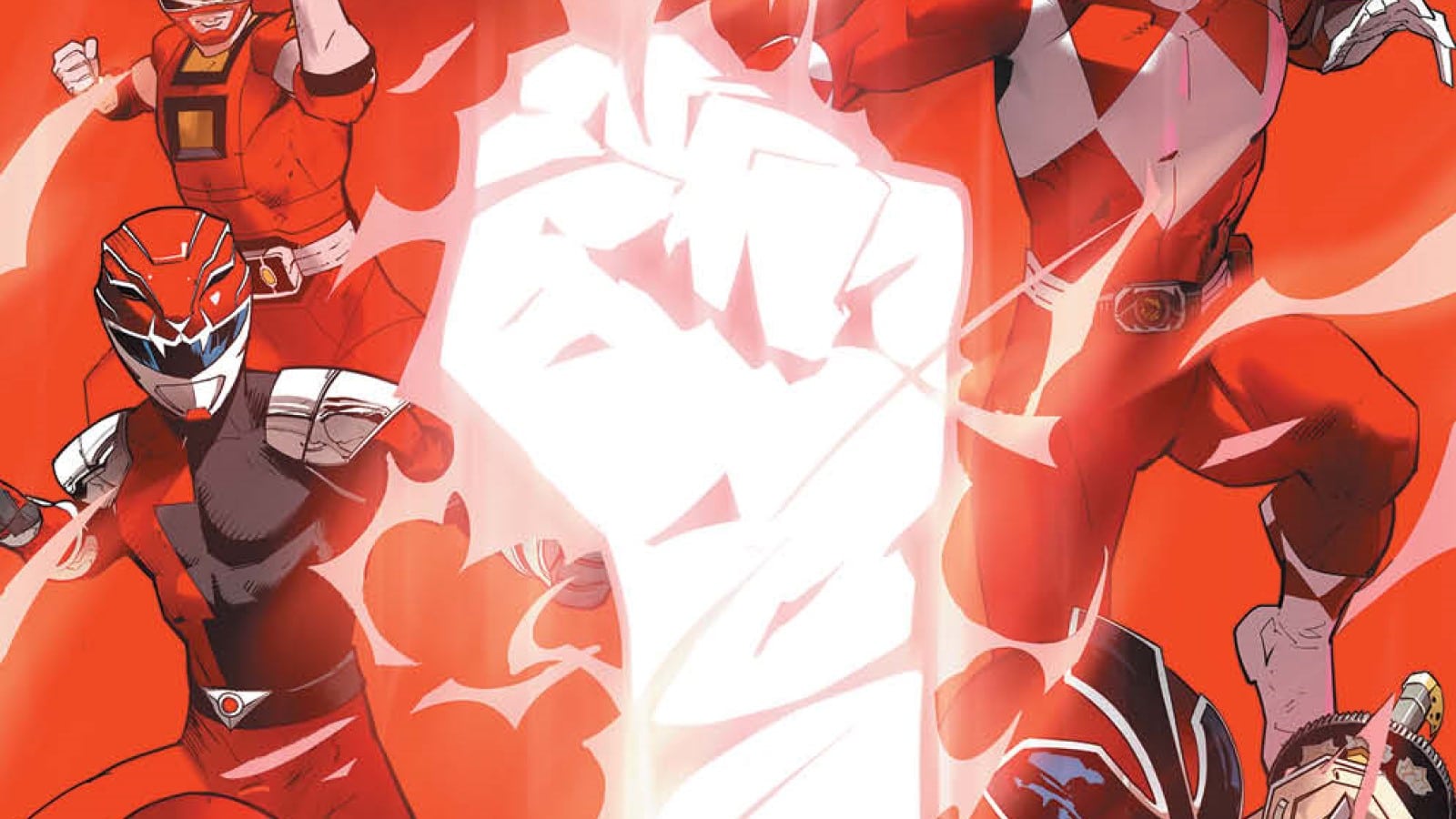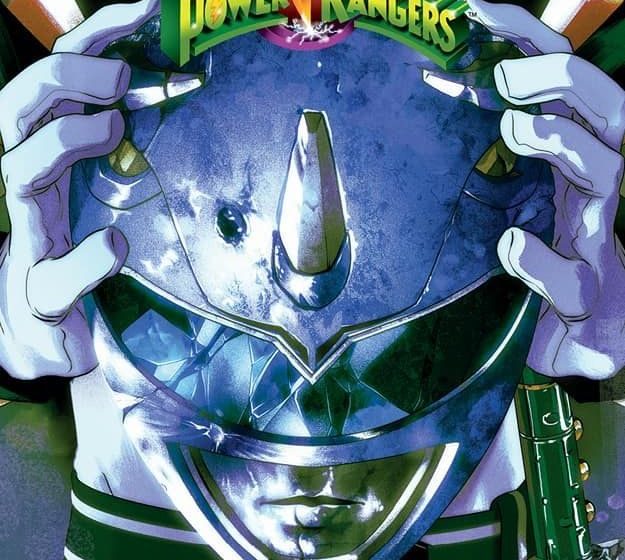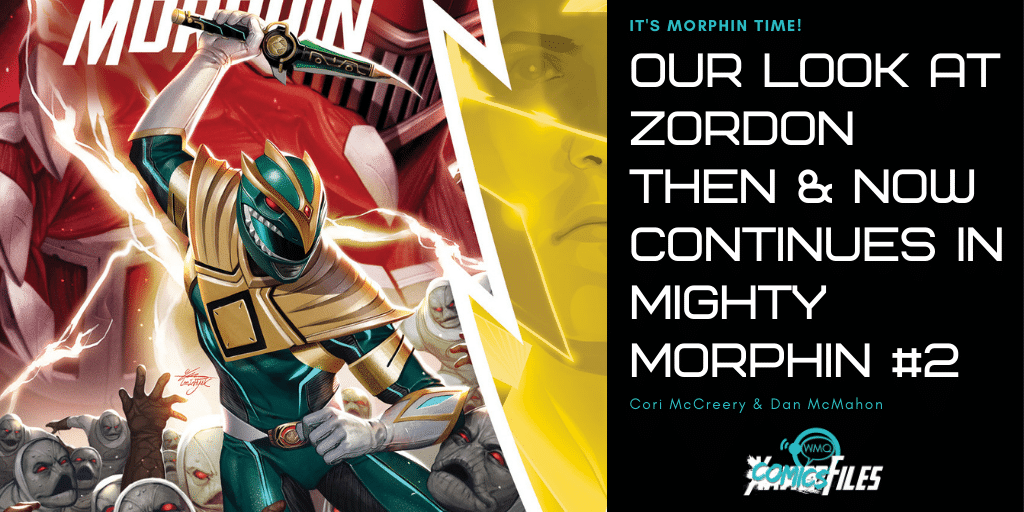Power Rangers Unlimited: The Death Ranger #1 is Written by Paul Allor, Drawn by Kath Lobo and Anna Kekovsky Chandra, Colored by Fabi Marques and Sara Antonellini, Lettered by Ed Dukeshire
The Death Ranger!
The brand new Ranger and queer antagonist you did not know you needed!
The announcement of the character went viral on social media, particularly as the character was revealed to be Non-Binary. That drew attention and interest beyond the usual insular channels and circles of Tokusatsu/Ranger crowds and Comicsheads. A Non-Binary Power Ranger? And they’re the Death Ranger? It was a winning combination. The character seemed to be immediately embraced online.
Now how does their actual comics debut fare?
If you’ve read Paul Allor’s work before, particularly their tremendous series Hollow Heart, you’re aware that Allor is very capable of doing work exploring connection, isolation, and loss in a resonant manner, whilst delivering potent queer tragedy. Hollow Heart was a book swimming in both pain and anger and yet also the sensitivity and love and passion that form the human experience. This reads and feels like it’s angling closer towards that, Allor’s more personal and intimate work, than any other Power Rangers comic I’ve tried.
At its heart, this is a tragedy. The tragedy of an individual deprived of their connections, isolated, and how their trauma explodes. It is about the desperate need for connection and the pain and horror their erasure can lead to, how grief can transform us. It is in dialogue with Allor’s prior work, which is deeply considerate and invested in the emotional well-being of people and embraces them in their complexity, with all the good and the bad that comes with being human.
That’s reflected here.
The Death Ranger is Spa’ark, a member of the supposed legendary Omega Rangers that protected the universe thousands and thousands of years ago in the past. They are the Gold Ranger, powered by the sun, whilst their other peers are based on the basic elements of nature, such as Fire, Water, Earth, Air.
Spa’ark comes from an alien race and society where there is no concept of ‘death’ or even grieving, given that when people ‘pass on’ they still remain connected to the living. All those who have ceased to live now reside in a collective consciousness (dubbed ‘The Legacy’) bound to the living, which means they’ve never truly left you, not really. They just no longer exist in a physical dimension.
But there’s a problem: Spa’ark has been disconnected from their people and thus their collective consciousness for far too long. They’re isolated, and experiencing isolation in a way that is fundamentally alien and impossible to them. All the voices that they’ve had in their life since their youth, as natural as blinking, all gone, with nothing there. They’re in a dark, lonely place, and the one person who seems to be trying to understand Sepa’ark’s struggle is the Blue Omega Ranger of Water- Haze. She’s the one person Spa’ark has the most connection to, at this juncture. The one person they can lean on and really express themselves with. A comfort in the hollow void of existence that now seems so dreadful.
Which means when she dies, things don’t go so well.
Spa’ark spirals, finding the concept of death absurd, ludicrous and unnatural. If this is a ‘law’ of existence, surely it’s one meant to be broken? For what manner of ‘law’ is this? It’s not fair. It’s not right. It’s cruel. It’s monstrous. Why must it be accepted? Why can’t we change it? Are they not heroes? Why can’t they fight this like they fight every other unjust terror that plagues the universe?
That question forms the essential spine of the issue, and it is what forms the essential heel turn of Spa’ark. They end up drawing upon the power of a celestial monster and using it to unlock the true power of their morpher- reviving the dead. And it, predictably, all goes wrong, as even a revived Haze does not wish to be revived, and tells Spa’ark that they must let her go, and accept the way of things. And amidst all the horror of this fallout, Spa’ark dies, too, but being nowhere near their collective to return to The Legacy, they instead end up trapped in their morpher.
That morpher now sits hidden away, awaiting to be unlocked and unleash The Death Ranger upon existence. The immortal queer villain no one quite expected from Power Rangers!
The emotionality of the whole affair works, particularly given artists Kath Lobo and Anna Kekovsky Chandra both do solid expressive character work. They express a great deal through a small line here, a little touch there, and simple gestures portray a revealing story. The vibrant action spectacle a genre book like this demands is solid as well, as it is a colorful feast with Fabi Marques and Sara Antonellini’s work. But their ability to give life and help express in color the emotional contrasts of what’s occurring is a good part of why the book works. The story requires the characters to feel like relatable, messy people, and that’s what the art team is able to nail.
The team, on the whole, plays it smart here, choosing to frame the entire narrative as an old ‘story’ being told to little children at bedtime. Meaning the whole affair is very accessible to most people, including and especially all the prospective readers who will be picking this up having never touched a Power Rangers comic before given there’s a cool new queer antagonist. Certainly, I didn’t feel like I was missing out on anything or had to do any extra reading to ‘get’ the story.
The ‘let me tell you an interesting old Ranger story, kids’ approach works to set up the almost mythologized and ‘warning’ tale nature of the Death Ranger in the context of the setting and the Ranger concept, evidently. But it also works on the practical level to serve a readership beyond the insular crowd that keep up with everything PR.
And while there are sure to be some understandable sighs at the prospect of yet another non-binary character being an ‘alien’, far more important is the fact that a creator like Allor is the one getting to tell this story (and being paid for it), and also that it is actually resonant and works. It lives up to what you’d want from the creator behind Hollow Heart doing when you think ‘They got ‘em on Power Rangers?!’.
And given that it actually feeds into the ‘Take the base motif and come up with something new’ conceit and appeal of Sentai/Power Rangers, the one-shot works as a clean one and done for anyone. You can dig deeper and want to go pull up more comics to read more and learn more about who these gosh darn ‘Omega Rangers’ are and what their deal is. Certainly, the comic is designed in such a way as to intrigue on that front. But you can also just as well read this on its own terms and stop and be fine, and that’s a major plus.
It’s a one-shot that feels like it’s screaming ‘Hey! Here’s a cool idea!’ but it is also aware enough to know that while an idea/high concept gets you in the door, what keeps you in is character and emotional resonance. It centers character and really wants to make you care about the person behind the concept, so that when they become who they become by the end, it has an impact, so that you don’t finish the issue going ‘Well I love the idea of the Death Ranger, it’s a sick design, it’s why I bought it, but I feel like they didn’t really do much with it’. It doesn’t rest on its conceptual laurels, as it were, which is all too common in IP work-for-hire comics. It tries to earn your interest, rather than merely expecting it.
And I can respect that.
Ritesh Babu is a comics history nut who spends far too much time writing about weird stuff and cosmic nonsense.

